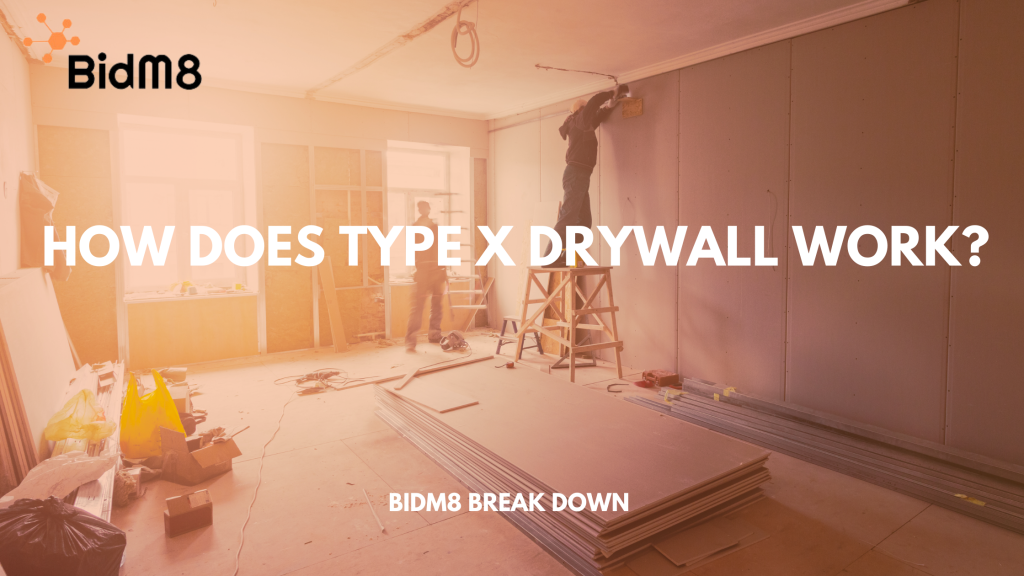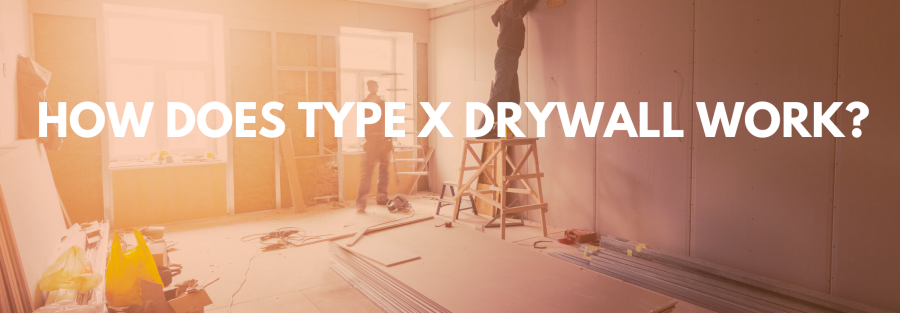
When it comes to fire resistance in construction, Type X drywall is a game-changer. If you’re a contractor, builder, or property owner, understanding what makes Type X drywall unique is critical for safety, compliance, and smarter builds. Let’s dive into the details.
What Is Type X Drywall?
Composition:
Type X drywall is engineered with fire resistance in mind. Its core includes:
- Gypsum: A natural mineral that releases water when exposed to heat, slowing fire spread.
- Glass Fibers: These add strength and prevent the drywall from crumbling under high temperatures.
How to Identify Type X Drywall:
- Thickness: Typically 5/8 inch, thicker than standard drywall.
- Labeling: Check for “Type X” or “fire-rated” marks on the paper backing or packaging.
- Density: Type X feels heavier due to its denser core.
What Type X Drywall Isn’t:
Don’t confuse it with standard drywall. Regular drywall doesn’t have the same fire-resistant properties and will fail much faster in a fire.
How Does Type X Drywall Work?
Type X drywall excels in fire resistance for three key reasons:
- Heat Absorption: Gypsum contains water molecules that release as steam when heated, cooling the surrounding area.
- Structural Integrity: Embedded glass fibers prevent disintegration, keeping the wall intact longer.
- Fire Spread Reduction: The dense core resists flames, slowing down their progression through the building.
This makes Type X drywall a lifesaver—literally—by providing extra time for evacuation and firefighting efforts.
Why Is Type X Drywall Necessary?
Safety and Code Compliance:
Type X drywall is not just a recommendation; it’s a requirement in many cases:
- Building Codes: Fire-rated assemblies specified in the International Building Code (IBC) and local regulations often demand Type X drywall in:
- Shared walls in multi-family housing
- Stairwells and elevator shafts
- Commercial spaces
- Insurance Savings: Many insurers recognize the reduced fire risk, leading to potential premium discounts.
Peace of Mind:
For contractors and homeowners alike, Type X drywall is a proactive safety investment that protects lives and property.
Who Invented Type X Drywall?
The concept of fire-resistant drywall traces back to innovations by the United States Gypsum Company (USG) during the mid-20th century. USG pioneered products that combined fire resistance with ease of installation, setting a new standard for construction materials.
When Should You Use Type X Drywall?
Type X drywall is your go-to solution for any area requiring enhanced fire resistance. Here are the key use cases:
- Residential Spaces:
- Between garages and living spaces
- Around furnaces, HVAC systems, and electrical panels
- Commercial Buildings:
- Stairwells, corridors, and walls separating units
- Ceilings requiring fire ratings
- Multifamily Housing:
- Shared walls and ceilings for code compliance
- Renovation Projects:
- Upgrading older buildings to meet modern fire safety standards
Why Type X Drywall is Worth the Investment
Choosing Type X drywall means prioritizing safety, code compliance, and peace of mind. It’s a simple yet effective way to safeguard your project from fire risks while meeting industry standards.
Get Competitive Pricing for Type X Drywall
Looking for the best deals on Type X drywall? Use BidM8 to get bids from local suppliers. Save time, cut costs, and build smarter—all while staying compliant with safety codes.
Share the Knowledge
Found this helpful? Share it with your team or fellow builders—because safety and savings are worth spreading!

